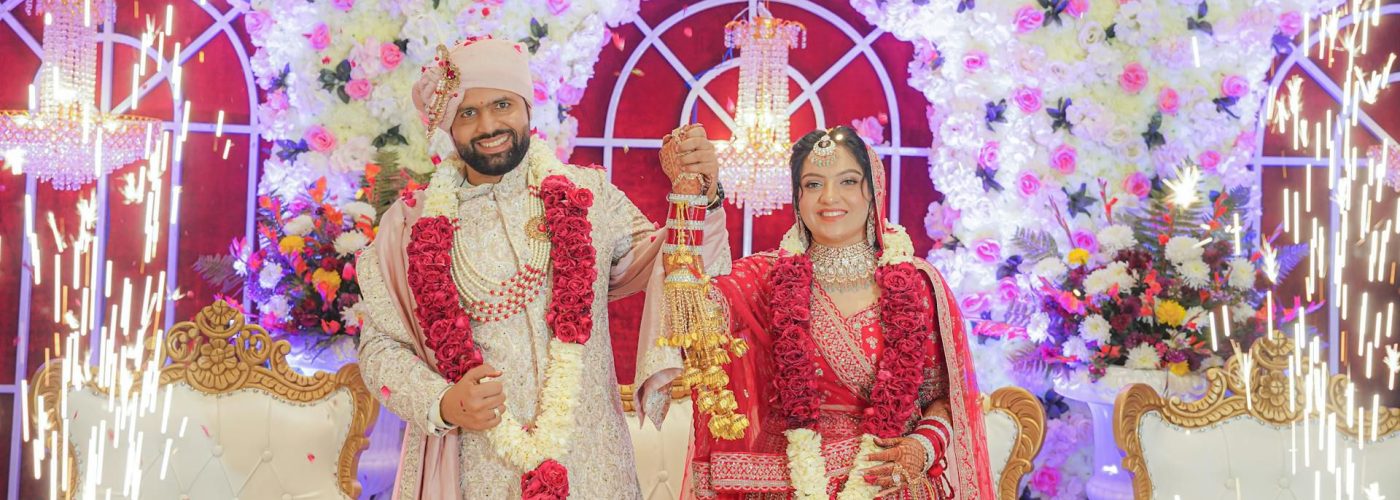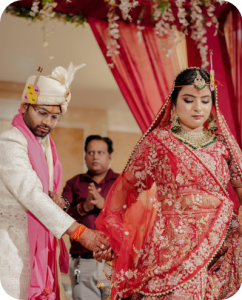Understanding the Mandap:
Meaning and Rituals in Hindu and Asian Weddings
A mandap is more than just a stage at a wedding — it is the sacred structure under which a couple takes their marriage vows. In Hindu and some Jain, Sikh, and South Indian wedding ceremonies, the mandap provides the space for important rituals, such as the pheras (circling the sacred fire) and the kanyadaan (the giving away of the bride). Traditionally, the mandap consists of four pillars supporting a canopy. These pillars are often said to represent the couple’s parents or the four goals of life in Hinduism — dharma (duty), artha (prosperity), kama (desire) and moksha (liberation. Under the canopy, a sacred fire burns, serving as a symbolic witness to the marriage.
Beyond its physical structure, the mandap carries deep cultural meaning. As wedding‑planner websites note, an altar or canopy highlights the couple’s honour and demarcates the spot where vows are exchangedtheknot.com. The mandap serves as an altar in Hindu ceremonies, providing a space where families come together, rituals are conducted, and blessings are received. The bride and groom sit facing east so that they greet the rising sun, and their families gather around them to conduct prayers and recitations.

Symbolism and Components
- Four pillars and canopy – The four pillars support a canopy that symbolises the protective shelter given by the couple’s parents and eldershitched.co.uk. The canopy is often decorated with flowers and fabrics that match the wedding theme.
- Sacred fire (Agni) – At the centre of the mandap, a sacred fire burns to invoke Agni, the fire god. The couple circumambulates this fire during the pheras, promising to support each other throughout their lives.
- Ritual seating – Traditional Vaastu guidance states that the mandap should be square to ensure balanced energy. The structure is usually placed in the northeast corner of the venue, and the couple should sit facing each other.
Key Rituals Under the Mandap
- Kanyadaan – the father of the bride places his daughter’s hand into the groom’s hand, symbolising the giving away of the bride.
- Pheras – the couple circles the sacred fire four or seven times, each round representing vows relating to duty, prosperity, love and spiritual liberation.
- Saptapadi – the couple takes seven steps together while making seven promises to each other and to God.

The mandap, therefore, serves as the heart of the ceremony. Whether you opt for a traditional wooden structure adorned with marigolds or a modern minimalist design, choosing and decorating your mandap thoughtfully will ensure that this sacred space reflects your values and aesthetic.
